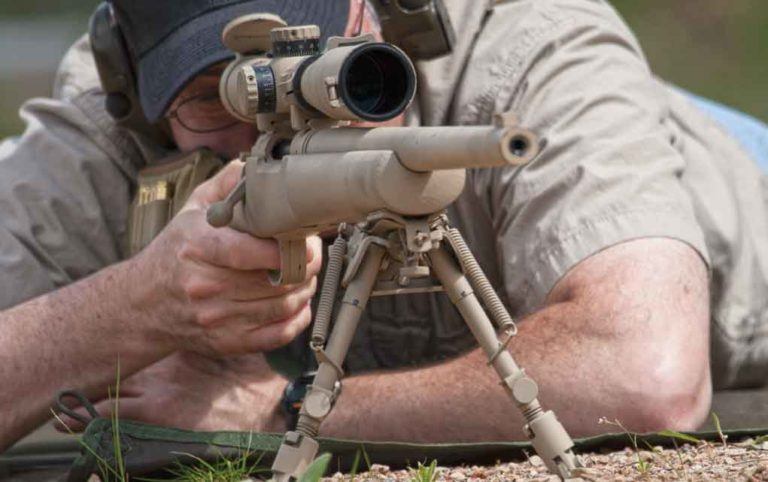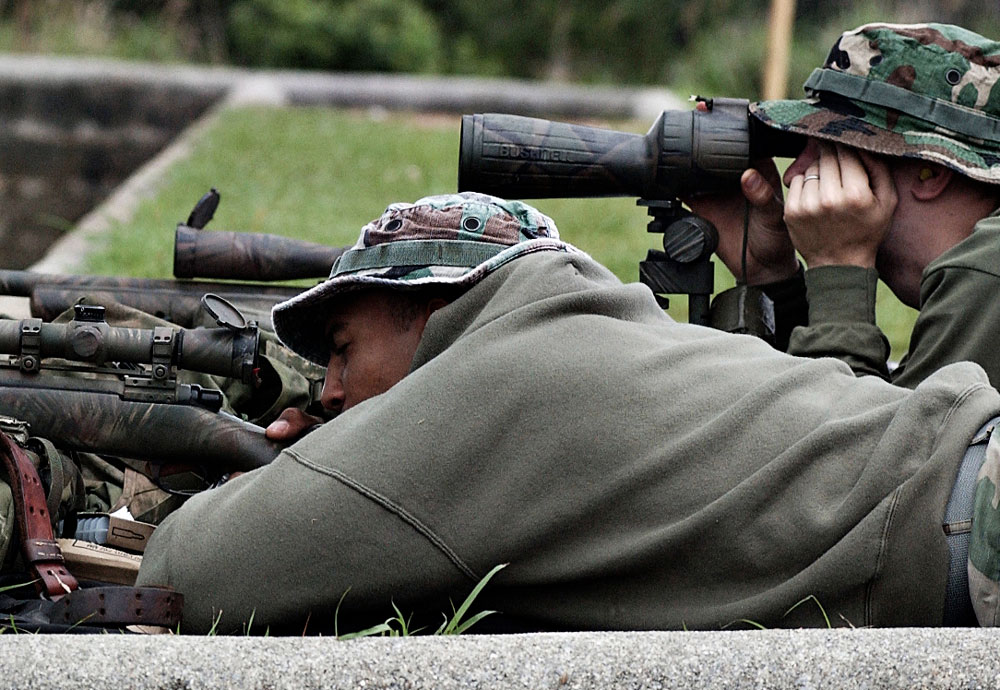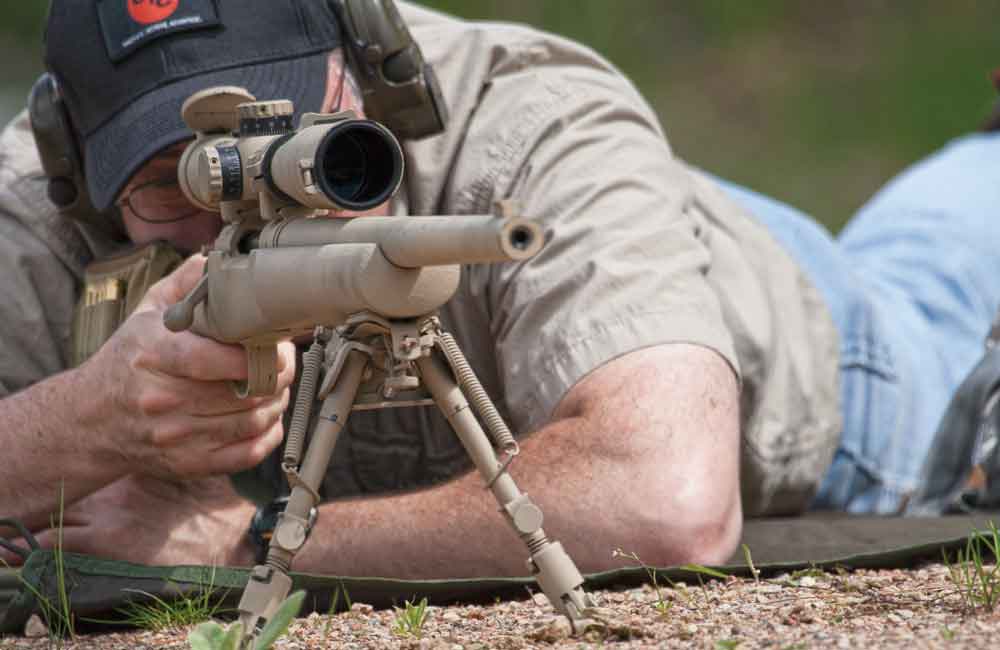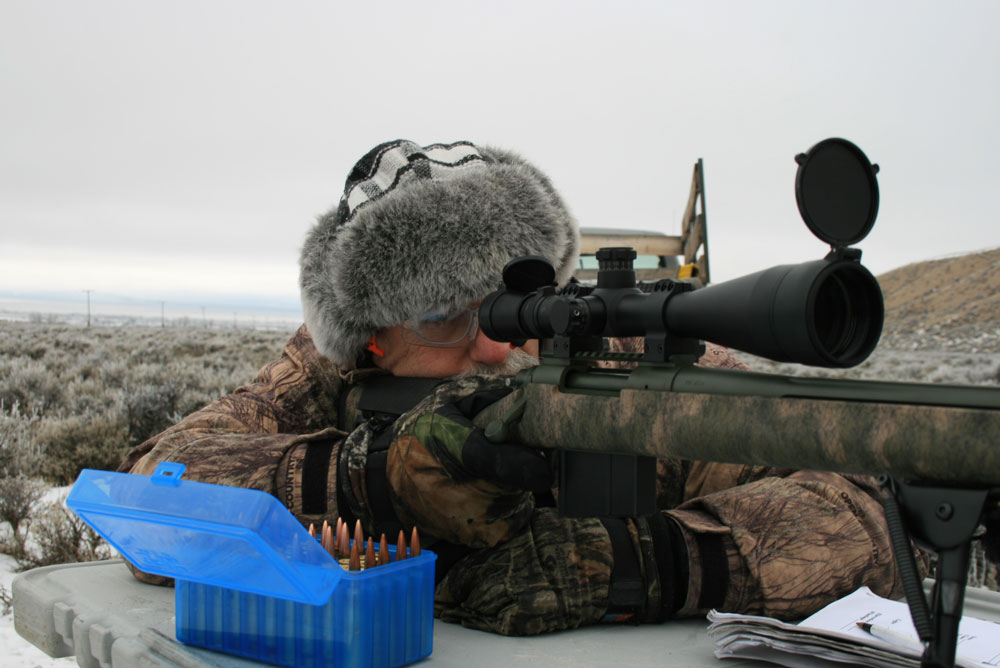
Although gravity and wind are the main influences on a bullet’s path, there are certainly some other factors to consider as well. One of these is the initial bullet speed.
How does initial bullet speed play into external ballistics?
- Bullet speed does not lessen or increase gravity's effects.
- It merely gives more or less time for the force to act on the projectile.
- Three things determine speed: a bullet's initial speed, its efficiency and environmental variables.
- A longer barrel permits a faster bullet, but this doesn't equate to more accuracy.
- Temperature also can affect velocity.
Hopefully, we dispelled the myth that a fast bullet somehow resists gravity. Instead, a fast bullet merely gets to the target faster and therefore has less time to fall. Also, the longer it takes for a bullet to reach a target, the more exponentially it falls.

In an example we used, a bullet from my .308 Winchester only falls 4 inches between the 100- and 200-yard berms, but it falls almost 100 inches between the 900- and 1,000-yard berms. The bullet falls more when it’s farther away because it is traveling slower (it takes longer to cover the 100 yards between berms), and it is also falling faster.
When we discuss wind in a future article, you’ll see that the amount of time a bullet is exposed to wind (how long it takes to get to the target) also has a direct effect on how much a bullet is blown off of its original path.
Gravity And Wind
At a basic level, the two main things that will affect your bullet’s path are gravity and wind. All of the other variables you hear about — air pressure, temperature, altitude and humidity — don’t affect the bullet’s path. Instead, those variables only change how much gravity and wind can affect the bullet.
Of course, there are other things that will affect your bullet’s path. For example, the spin of the earth and the spin of your bullet can both change a bullet’s path. However, let’s save those for a future discussion once you understand the basics first.
There are three variables that determine a bullet’s speed on its way to the target:
- The initial bullet speed
- The efficiency of the bullet
- External/environmental variables
In this piece, we’ll explore initial velocity. The other variables will be discussed in future columns.

Don’t fall into the trap of thinking that faster is always better. There are many shooters who chase the newest fad cartridge to get whatever velocity increase they can. Yes, a faster bullet has less time to fall and be affected by the wind, but just because it is faster doesn’t mean it’s necessarily better overall.
Sometimes a slower bullet can be more accurate, lighter recoil from a smaller cartridge can be easier to manage, or a heavier, slower bullet might perform better when hunting (e.g. .17 HMR vs. .30-06 Springfield while elk hunting).
Initial Bullet Speed
A bullet is never faster than when it first leaves your barrel. Just as it starts to immediately fall due to gravity, it also starts to slow down due to air resistance.

The cartridge largely dictates a bullet’s initial velocity range. The same bullet can be shot faster with more pressure up to the safe limit for a particular cartridge. Once you reach the pressure limit, you’ll need to upgrade to a cartridge that can handle more pressure.
Another way to increase initial bullet speed is to shoot a lighter bullet. Within the same cartridge, a lighter bullet can be shot faster. However, that lighter bullet will slow down faster due to air resistance, and it will be affected by wind more than a heavier bullet going the same speed.
Barrel Length
Generally, a longer barrel allows for faster bullet speed. As I mentioned above, however, this isn’t necessarily better.
For example, a shorter rifle barrel can make for a lighter rifle that is easier to carry in the field while hunting, and it can make a rifle more maneuverable in a tactical situation.
Do you know what else a shorter barrel can do? It can make a rifle more accurate. Yes, you read that right. A longer barrel does not provide more accuracy; it only provides more velocity.

Consistency is the key to accuracy. A longer barrel of a certain diameter can flex and “whip” more than a shorter barrel of the same diameter. The shorter barrel is relatively “stiffer.” Imagine two sticks of the same diameter but different lengths — the longer one is easier to flex and break.
Temperature
A bullet’s initial velocity isn’t constant. Even with the same cartridge shooting the same bullet with the same powder charge, higher temperatures will result in faster velocities.
Higher temperatures can be experienced either because of the temperature of your environment (it’s a hot day) and/or the temperature of your chamber (it’s a cold day but you’ve been shooting a lot).

Powder manufacturers continue to make gunpowder that is more temperature stable (less affected by temperature). Although great advances are being made, no powder is completely immune to temperature changes. You should shoot in different temperatures and record what happens to your bullet.
This article originally appeared in the July 17 issue of Gun Digest the Magazine.

Next Step: Get your FREE Printable Target Pack
Enhance your shooting precision with our 62 MOA Targets, perfect for rifles and handguns. Crafted in collaboration with Storm Tactical for accuracy and versatility.
Subscribe to the Gun Digest email newsletter and get your downloadable target pack sent straight to your inbox. Stay updated with the latest firearms info in the industry.

![Best Concealed Carry Guns In 2025 [Field Tested] Wilson Combat EDC X9S 1](https://gundigest.com/wp-content/uploads/Wilson-Combat-EDC-X9S-1-324x160.jpg)


![Best 9mm Carbine: Affordable PCCs [Tested] Ruger Carbine Shooting](https://gundigest.com/wp-content/uploads/Ruger-Carbine-Shooting-100x70.jpg)
![Best AR-15: Top Options Available Today [Field Tested] Harrington and Richardson PSA XM177E2 feature](https://gundigest.com/wp-content/uploads/Harrington-and-Richardson-PSA-XM177E2-feature-100x70.jpg)
